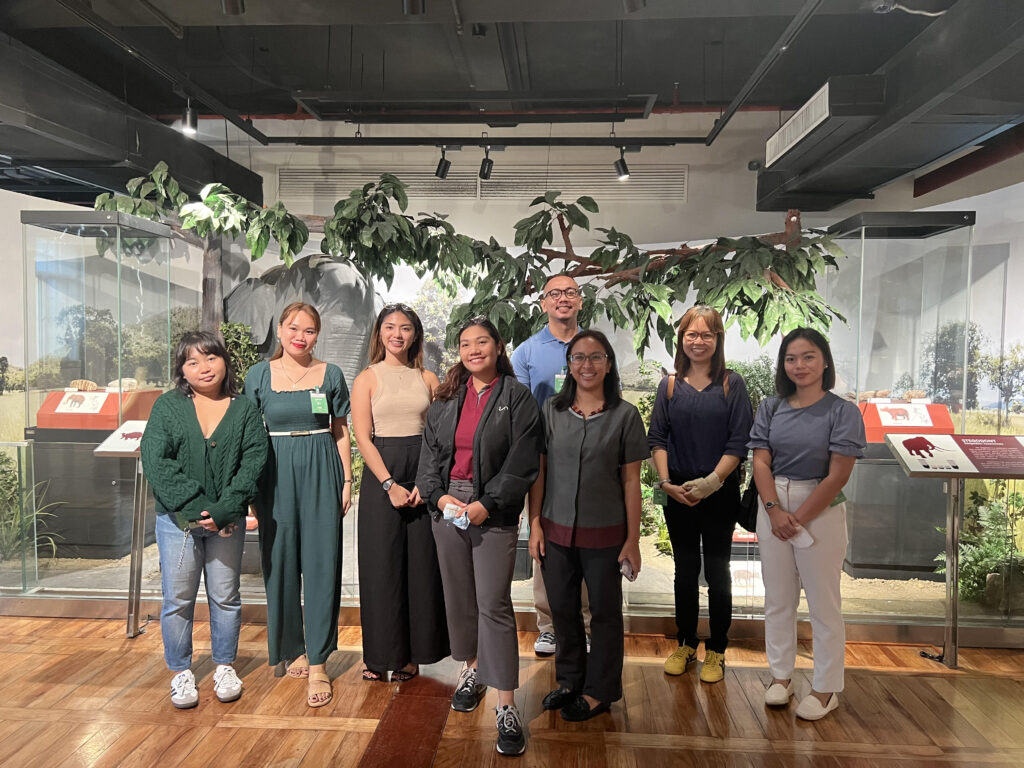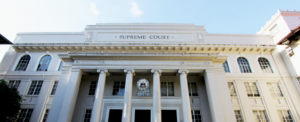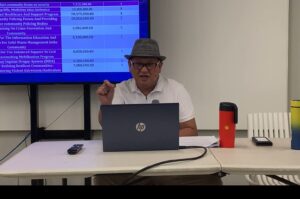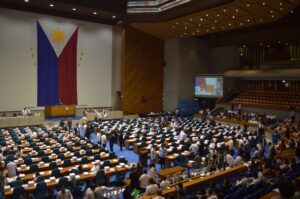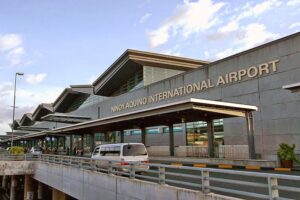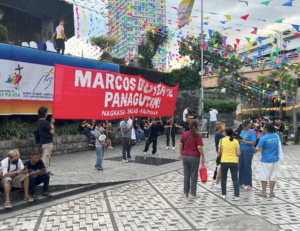It was my second time two Mondays ago to visit the Philippine Museum of Natural History; the first time was in 2019 with a college friend from the University of the Philippines Visayas and his two work colleagues who were employed as journalists for local newspapers—our goal was to see for ourselves the newest building within the Philippine National Museum Complex located next to the sprawling Rizal Park in the nation’s capital.
During my first visit, I was a mesmerized museum visitor, awed at both the beauty of the edifice, the restored building of the former Department of Agriculture and Commerce, which suffered major air bombings in the Second World War before it was rebuilt to house the present Museum of Natural History completed in 2016 during the administration of Pres. Benigno Aquino III (“National Museum of Natural History,” No date), and the obvious care and attention to detail employed in curating the exhibits that were contained within the rebuilt neo-classical building.
For my second visit, I am now a graduate student in the first semester of my PhD program. World Archaeology is one of the foundational courses in my program alongside Linguistic Anthropology, Physical Anthropology, Theories on Anthropology, and World Ethnography. This visit is therefore filtered through and within the ambit of my new role as a student of Anthropology. I am just beginning to connect the two related fields and understand the significant contributions played by archaeology to my broader and deeper appreciation for the field of Anthropology where I hope to conduct and publish pieces of research in the future that will lead to the advancement of the field in the country and of our understanding of how and what it means to be a human being.

On first look, while I understand that there is a clear link between archaeology as a field and natural history as the umbrella discipline, it is easy to diminish the minuscule part that archaeology plays within the schema of Earth’s expansive geological development, because after all, archaic member of Homo sapiens have only been on the planet for about 300,000 years (some claiming that the species dates back to as far as 600,000 years ago) while modern humans, Homo sapiens sapiens only began walking on the surface of the planet some 160,000 years ago (Doray, 2020). The oldest specimen in the Museum, according to senior museum researcher Abigail Castro, is some 160 million years old, which is about 530 times older than the oldest fossil of ancient Homo sapiens. And the Museum of Natural History parallels this small fraction of time by bestowing upon archeology the commensurate amount of space that reflects the section of Earth’s geologic time it concerns itself with as a scientific field. Professor Faylona, my World Archaeology professor, as a matter of fact, kept on saying that the Pleistocene, a period that includes the last ice age and where many of the archaeological finds displayed in the Museum were excavated from is a relatively recent geologic period. I suppose it is negligible if it is placed within a relief that represents the eons in Earth’s history, but because we are biased for our own species and existence, we accord it an inordinate amount of attention, if not space, in a natural history museum.
The Philippine Museum of Natural History holds a dozen long-standing, curated galleries that showcase the abundance of Philippine biodiversity and geological heritage. All these exhibits radiate from the architecturally exquisite and symbolic “Tree of Life” situated within a vast atrium. It can be observed that the museum, as all museums should, has to keep a robust equilibrium between the hard sciences—physics, chemistry, geology, artifact dating, zoology, botany—and the art and aesthetics of communicating this message to a public that may not be well-versed in the methods, practices, and processes involved in curating fossils, remains, artifacts, taxidermy, and other exhibits inside the museum.
As it was a Monday, the entire museum was closed, but the staff of the Museum were generous enough to welcome our class and to give us a private lecture and tour of some relevant areas of the Museum. We climbed to the third floor of the museum building that contains fossils found in the Philippines; upon entrance, we were greeted by an awe-inspiring replica of a megalodon open jawbone, complete with serrated teeth; in the middle of this jaw is an actual bone of a shark jaw positioned strategically there for the purpose of size comparison. Ms. Castro was quick to give a caveat that this bone exhibit does not belong with the rest of the exhibit in the gallery, but it was placed there to inspire among the visitor a sense of wonderment and amazement when they enter the giant room. The exhibits were curated following a certain configuration—mountains, forested area, riverine, tidal, and marine prehistoric ecosystems. There were also parts of the gallery that showed animals from the last ice age that coexisted with early humans in the Philippines.
From the third floor of the Museum, we were taken to the basement, usually off-limits to the public, where the samples are gathered, labeled, stored, processed, dated, and prepared for display. Here we saw up close and personal the “hard science” part of museology.

Although archaeology is defined as the science of human history and prehistory accomplished by means of excavating sites and analyzing artifacts and other material remains, and that it is concerned with the tiny sliver of Earth’s geologic past, it shares with geology, paleontology, and natural history as a whole much of the science, methodologies, and principles in order for it to arrive at significant insights on how human culture and civilization began and developed. Principles like context and associations, rock stratigraphy, and recognizing patters of deposition and sedimentation are utilized to have a more complete understanding of our past, both the deep past and the relatively more recent one.
Archaeology, like all other sciences, has always been and is increasingly becoming more interdisciplinary, heavily reliant on both hard and social scientific disciplines in order to arrive at a more encompassing analysis of human prehistory and history—its conclusions are more satisfying because it has made use of the theories and principles from other fields. And nowhere is this more obvious and glaring as in the laboratories and galleries located in the Philippine Museum of Natural History.
References:
Doray, F. (2020). “Home sapiens—modern human.” Australian Museum. Retrieved on 21 September 2024. <https://tinyurl.com/bdz9thtt>.
“National Museum of Natural History” (No Date). National Museum of the Philippines. Retrieved on 21 September 2024. <https://tinyurl.com/57twbsks>.
***
(John Ryan Recabar does research on Southeast Asia, specifically Vietnam, and he hopes to re-sharpen his skills in the Vietnamese language. He has also begun his research on indigenous cultures and peoples in southern Mindanao as he completes his PhD in Anthropology at the University of the Philippines Diliman. In his free time, he walks his dogs and feeds stray cats at a nearby park.)

